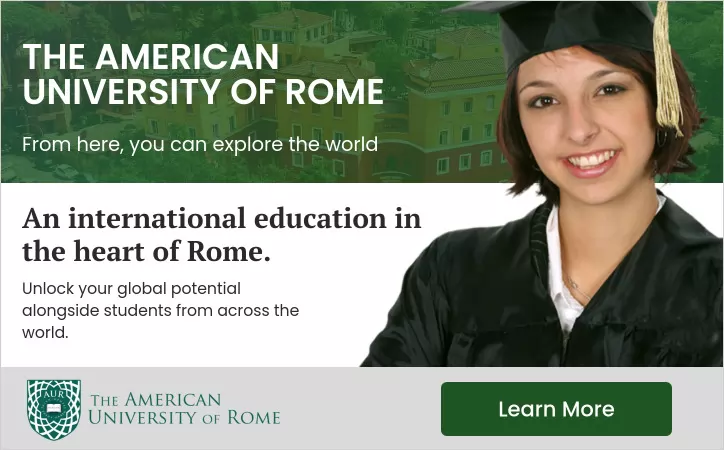Amanda Thursfield bids farewell to Rome's Non-Catholic Cemetery
Thursfield spoke to Wanted in Rome before stepping down after 15 years as director.
On a rainy day in December, Rome's Non-Catholic Cemetery is quiet. This hallowed graveyard in the city's Testaccio district is the final resting place of a diverse range of illustrious people who left their mark on the world.
Two of the cemetery's big draws for visitors are the Romantic poets Keats and Shelley. In the shadow of the pyramid of Caius Cestius, a ginger cat guards the gravestone of Keats – “Here lies One Whose Name was writ in Water” – sitting on a bed of flowers and tiny hand-written notes.
In another corner of the cemetery, under the Aurelian Walls, a fresh red rose lies on Shelley's tomb which reads: “Nothing of him that doth fade, But doth suffer a sea-change, Into something rich and strange.”
For more than three centuries this silent custodian of souls has offered solace to the grieving and served as a romantic oasis to visitors. Shelley himself wrote not long before he drowned and his ashes were buried here: "It might make one in love with death, to think that one should be buried in so sweet a place.”
But away from the otherworldly romance, this is an active cemetery run by a director, with the help of a panel of experts, a board of foreign ambassadors and a team of dedicated volunteers.
Amanda Thursfield, known to most people as Mandy, stepped down from her role as director on 31 December, after 15 successful years, but not before being awarded an MBE at Buckingham Palace in recognition for her services to the bereaved in Italy.
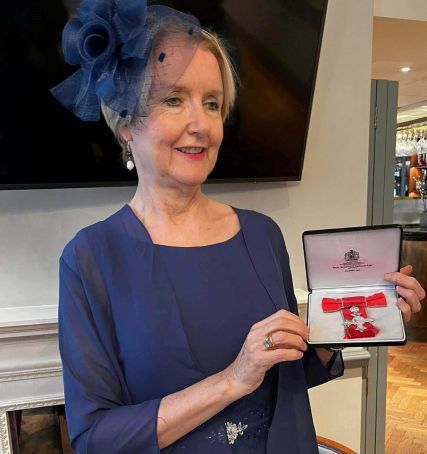
Competent, cultured and kind, Thursfield exudes compassion, all key qualities for her job. But how did she end up running one of Rome's most evocative places?
After obtaining her first degree in art history in the UK in the late 1970s, she moved to Bologna where she worked in the libraries at the British Council, got married and had a child. After 20 years she moved south to the British Council in Rome where she was director of programmes and handled cultural diplomacy.
“But 40 years before I'd been down to this cemetery and thought 'what an amazing place! I wonder what you have to do to work there?' It always stayed in my mind. And then I opened the newspaper one day, in 2007, and I saw this advert looking for a director who had to have these particular experiences and qualifications. I ticked all the boxes.” She applied and got the job, starting her demanding new role in 2008.
She immediately set about catching up with arrears and tried to help people if they had problems meeting the payments. “We spent a lot of time on communications and making sure that new people coming in knew what they were taking on because a concession on a tomb – the right to use a plot for 30 years – is quite a big thing. It's a bit like getting a piece of property and when you die it passes on to your heirs. People forget that, they're interested in the here and now but they don't think about what might happen in 30 years' time.”
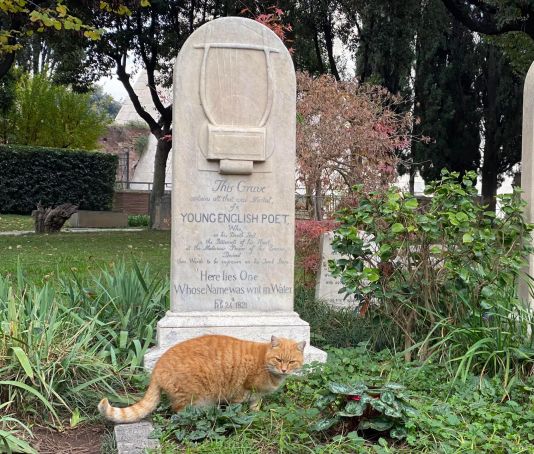
She computerised the archives and accounts, simplifying the process of accessing information. “In the past if somebody rang up with a query about payments we would have to call them back in 20 minutes” – she says – “the new system made our lives a lot easier.”
Another important change related to the gardeners. The cemetery moved from employees to an external company, Il Trattore, a social cooperative that helps young people who have had very slight psychological problems. Thursfield describes it as a mutually beneficial experience. “The gardeners benefit immensely from being outside, working in the seasons, it's not too stressful, they see life going on”, she says. “And it's good for us because they're sensitive people and are very kind to the concession-holders. Some very nice relationships have built up over the years.”
Treasure trove
Thursfield has also continued the “never-ending” restoration and conservation work on historical tombs. The cemetery is a treasure trove of ornate tombstones and notable sculptures including the Angel of Grief by the 19th-century American sculptor William Wetmore-Story.
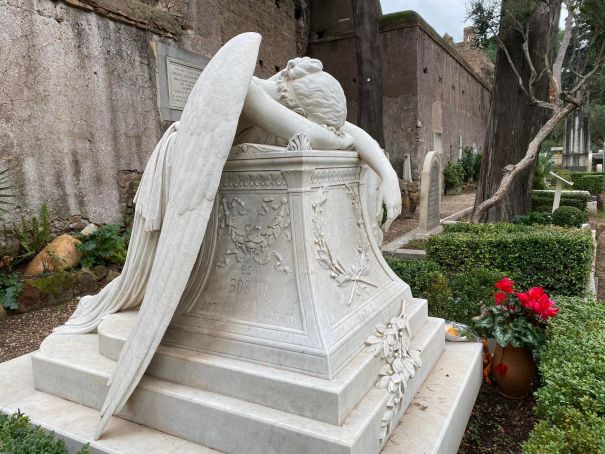
Asked what the biggest challenges the cemetery has faced in recent times, she is quick to say climate change. In addition to increasingly strong storms and extremely hot summers, she has had to deal with plant disease and parasites that risk causing irreparable damage to the cemetery's landscape. Experts have been drafted in to treat box blight, which threatens the distinctive box hedges demarcating graves and paths. Thursfield says the disease is “more or less under control” but fears “tough decisions” may have to be made in the long run about whether box needs to be replaced with some other more resistant plant.
Pine trees
The cemetery's pines have been threatened by the pine tortoise scale insect, a deadly parasite that feeds off sap and can kill the exhausted tree within two years. When it first came to light a couple of years ago, the cemetery acted quickly and began to treat its sick trees. It is a continual process but, for now at least, is proving successful.
Hot summers have caused the roots of pine trees to “come up for oxygen”, bursting through paths, with the gardeners regularly covering them back up. Other problems have included toppling pines, one of which fell over the Aurelian Walls into a public street in Testaccio, after the sap inside “exploded” on a particularly hot day last summer. The top of the tree “blew off like a champagne bottle”, Thursfield says, taking a bit of wall with it but “luckily a section that had been restored in the 1950s and not ancient Roman.”
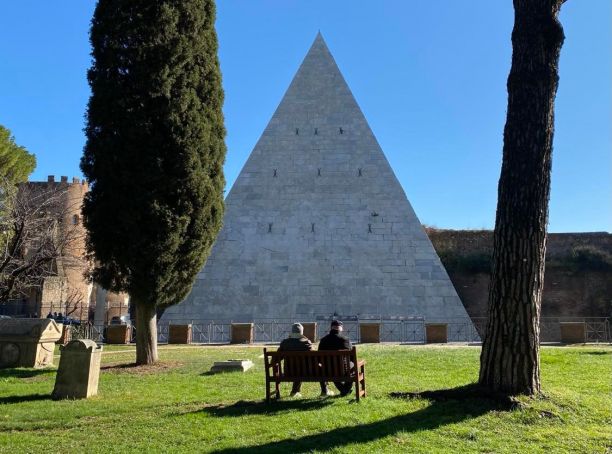
In other cases of nature being problematic, last winter an invasion of starlings covered the cemetery in foul-smelling guano and knocked down a huge pine due to the birds' sheer weight. The tree fell over the wall in the parte antica of the graveyard, near where Keats is buried, onto the base of the pyramid. Thursfield engaged a team of biologists with amplifiers emitting a loud alarm cry that frightened the birds away, with “really effective” results.
Another recent challenge was posed by the covid pandemic. “It was so sad, doing funerals with just a couple of people present, filming them, it was grim”, Thursfield says. The cemetery was closed to the public for a year, although concession-holders were allowed to visit their loved ones. The pandemic also prompted people to contemplate their mortality, leading to an uptake on pre-concessions, “when somebody is over 75 and they choose a plot and start paying for it, in the hope that they won't need it too quickly.”
So how many people are buried here annually? “There are on average 20 burials a year – those might be coffin burials or cremation urns – which is not a lot but it's very good for our finances”, Thursfield says, adding: “It keeps the place alive, if that's the right word to use for a cemetery.”
Visitors
As for visitors, the numbers have “certainly gone up four of five times” since she took up her role when the cemetery was “open rather spasmodically and sometimes not at all.” There are “easily 100 people a day and at weekends a lot, lot more” she says, stressing that they don't count exact numbers, “almost on purpose”. The busiest time is at the start of November, for the day of the dead, when concession-holders visit their loved ones and members of the public come “to consider these matters; it's a wonderful thing to see.”
Thursfield has reduced tour groups down to a maximum of 15 people, to maintain the cemetery's intimacy. “We don't want hordes of people coming”. She is against the concept of closing the gates to the public and introducing “guided tours four times a day at €12 a head” because “it would ruin the democratic aspect of this garden.” Instead, those who visit are asked to make a voluntary donation.
Where do most visitors come from? “We have local residents, Italian tourists, lots of tourists from abroad, of all nationalities” – she says – “Japanese, Indians – the Indians love the Romantic Poets and know much more about them than we do – Americans, Australians, northern Europeans.”
Remembering John #Keats on the bicentenary of his death in #Rome pic.twitter.com/gKXO0C533a— Wanted in Rome (@wantedinrome) February 23, 2021
Keats and Shelley, whose bicentenaries occurred recently, are the star attractions. Germans come to visit the only son of Goethe. Many Italians visit the tombs of Antonio Gramsci, founder of the Italian Communist party, and Sicilian crime writer Andrea Camillieri who was buried here in 2019. “Thousands arrived for his funeral, the carabinieri had to let people in just 20 at a time” – Thursfield says – “We'd never seen anything like it.”
Another aspect introduced during her tenure is the staging of events and small-scale exhibitions, which must relate in some way to the cemetery. “It started about 10 years ago when we restored the Garden Room, a lovely little space full of light”, she says. The exhibitions are held in spring and autumn and can be viewed by visitors as they walk around.
Volunteers
The day-to-day running of the cemetery involves around 40 “fantastic” volunteers who patrol the paths, work in the visitor centre and greet people at the door. Others work from home on a quarterly newsletter written in English and Italian and sent around the world to “friends” in exchange for an annual contribution. These funds are spent on “things that we wouldn't otherwise be able to do”, Thursfield says, together with generous one-off donations from individuals. Current projects include refurbishing the visitors' bathrooms, with additional facilities for women and disabled people.
The person behind the newsletter is Nicholas Stanley-Price, former director-general of the Rome-based International Centre for the Study of the Preservation and Restoration of Cultural Property (ICCROM). A leading expert on archaeological site conservation, Stanley-Price is the author of a fascinating book about the cemetery's history, published in 2014. “We are so lucky to have him ” – Thursfield says – “he does his own original research. He's excellent.”
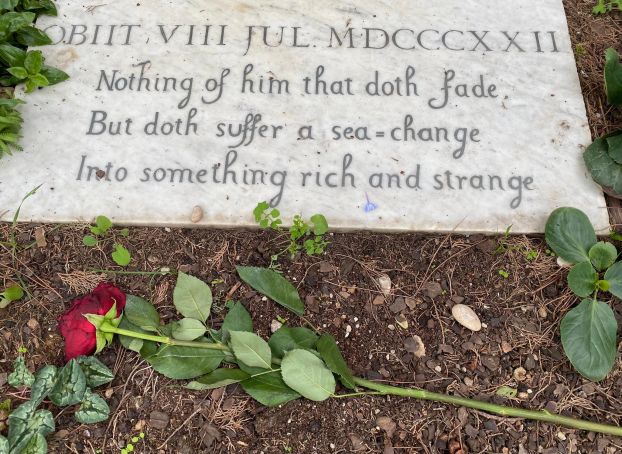
Parallel to the director is an advisory committee of specialists in their fields, including law, finance, conservation and religion. At the top are 15 ambassadors of the countries most heavily represented, currently headed by British ambassador Ed Llewellyn, whose collective approval is required for major decisions.
As Thursfield bids farewell to the cemetery, she is “very sad to leave” but is looking forward to painting watercolours in her retirement.
Her successor is Yvonne A. Mazurek who is of Polish-American origins and brings to the role “valuable experience of education, volunteer and project management, and research in the arts and cultural heritage”, according to a statement from the cemetery.
“I think she'll be very good”, says Thursfield, who leaves behind a lasting legacy on so sweet a place.
By Andy Devane
--------------------------------------------------------------------------------------------------------
Wanted in Rome
Thursfield described Wanted in Rome as an “important part of what we do here”. Indeed many of the magazine's founding members and dear friends are buried or remembered in the cemetery. These include Richard Mason (author and husband of one of the founders of Wanted in Rome), Edith Schloss (artist and art critic for the magazine), Geoffrey Watson (political correspondent), Cynthia Rockwell (expert on restoration and conservation), Peter Rockwell (sculptor and one of the world's greatest experts on stone carvings), Daphne Wilson Ercoli (historian who specialised in 19th-century Rome).
This article was published in the January 2023 online edition of Wanted in Rome magazine. Cover photo: Anthony Shaw Photography / Shutterstock.com.
General Info
View on Map
Amanda Thursfield bids farewell to Rome's Non-Catholic Cemetery
Via Caio Cestio, 6, 00153 Roma RM, Italy



